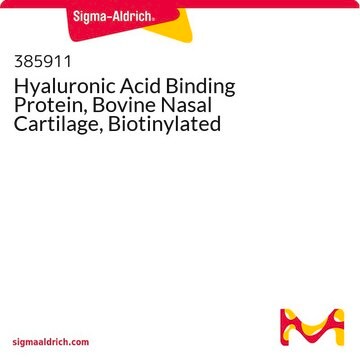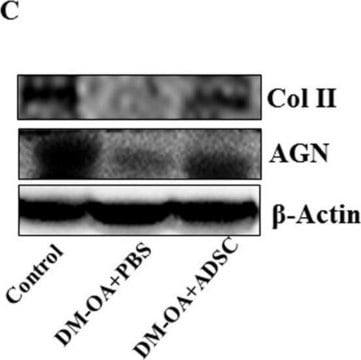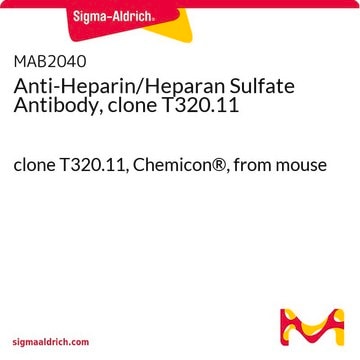MAB5284
Anti-Chondroitin Sulfate Proteoglycan Antibody, Brain (core protein), clone Cat-301
clone Cat-301, Chemicon®, from mouse
Sinonimo/i:
CSPG
About This Item
Prodotti consigliati
Origine biologica
mouse
Livello qualitativo
Forma dell’anticorpo
purified immunoglobulin
Tipo di anticorpo
primary antibodies
Clone
Cat-301, monoclonal
Reattività contro le specie
primate, human, rat, gerbil, feline, hamster, guinea pig
Produttore/marchio commerciale
Chemicon®
tecniche
immunocytochemistry: suitable
immunohistochemistry: suitable
immunoprecipitation (IP): suitable
western blot: suitable
Isotipo
IgG1
N° accesso NCBI
N° accesso UniProt
Condizioni di spedizione
wet ice
modifica post-traduzionali bersaglio
unmodified
Informazioni sul gene
human ... ACAN(176)
Descrizione generale
The name derives from the name of the monoclonal antibody originally used to identified by its expression, which was detected immunocytochemicaly
Disruption of the normal patterns of neuronal activity during the critical early postnatal period by physical or biochemical means results in a large and irreversible reduction in levels of CAT-301. Similar intervention in mature animals has no effect
CAT-301 is related to aggrecan from articular cartilage. The CAT-301 antibody immunoreacts with aggrecan, and the chondroitinase treated aggrecan and CAT-301 both have apparent sizes of 550kDa. However CAT- 301 is not glycosylated by keratan sulphate, as aggrecan is.
Specificità
Immunogeno
Applicazioni
Immunocytochemistry
Immunoblot
Immunoprecipitation
Optimal working dilutions must be determined by the end user.
Stato fisico
Altre note
Note legali
Not finding the right product?
Try our Motore di ricerca dei prodotti.
Raccomandato
Codice della classe di stoccaggio
10 - Combustible liquids
Classe di pericolosità dell'acqua (WGK)
WGK 2
Punto d’infiammabilità (°F)
Not applicable
Punto d’infiammabilità (°C)
Not applicable
Certificati d'analisi (COA)
Cerca il Certificati d'analisi (COA) digitando il numero di lotto/batch corrispondente. I numeri di lotto o di batch sono stampati sull'etichetta dei prodotti dopo la parola ‘Lotto’ o ‘Batch’.
Possiedi già questo prodotto?
I documenti relativi ai prodotti acquistati recentemente sono disponibili nell’Archivio dei documenti.
Il team dei nostri ricercatori vanta grande esperienza in tutte le aree della ricerca quali Life Science, scienza dei materiali, sintesi chimica, cromatografia, discipline analitiche, ecc..
Contatta l'Assistenza Tecnica.







